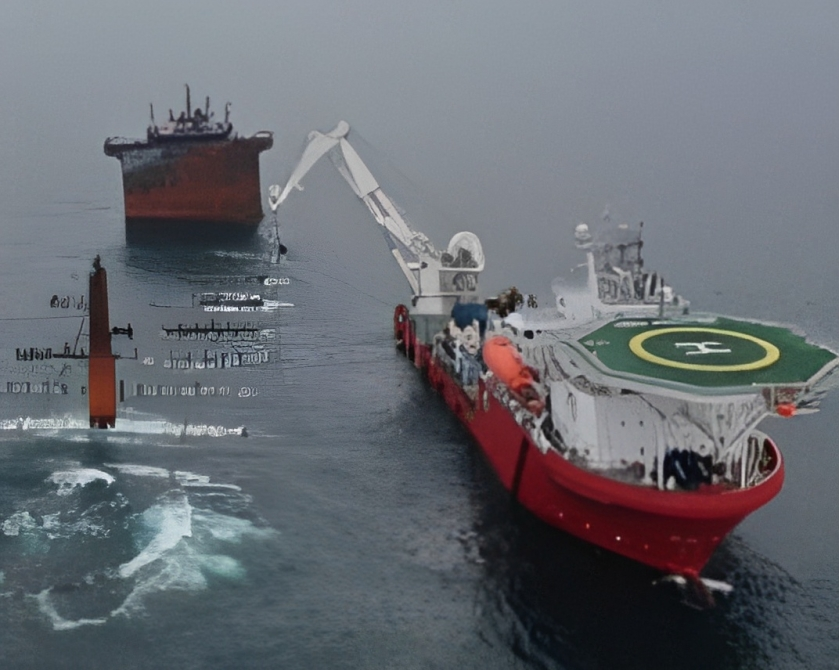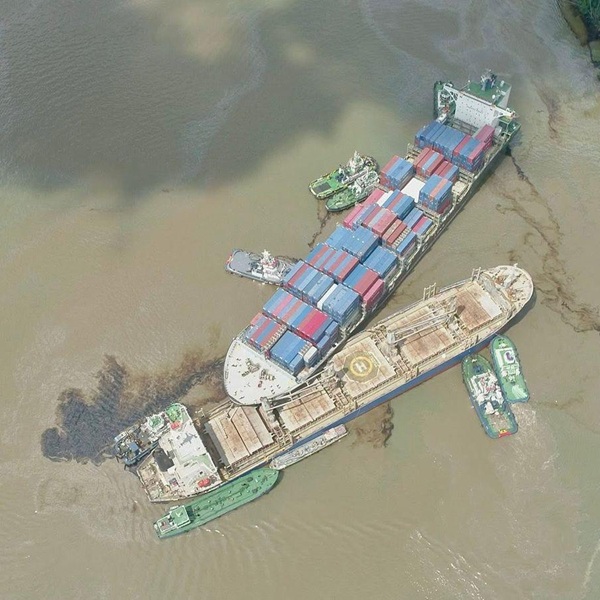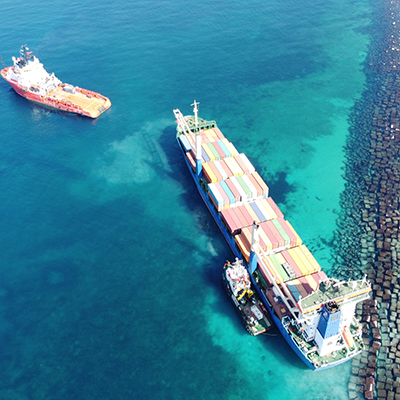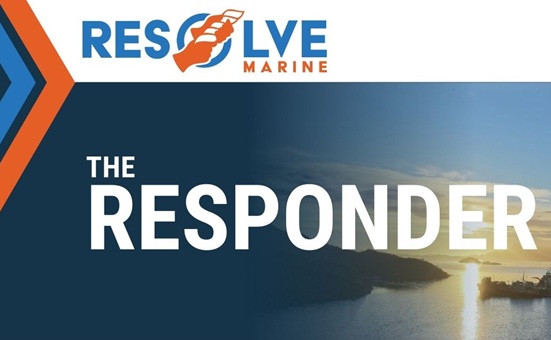
CASE STUDY: X-Press Pearl
Colombo | Sri Lanka

When the X-Press Pearl caught fire, the blaze spread through the vessel over 12 days and then sank approximately 10 miles offshore Colombo, Sri Lanka. At the time of incident, the X-Press Pearl carried 1,486 containers, containing mainly chemicals, cosmetics, low density polyethylene pellets and 25 tons of nitric acid. When the vessen sank, most of the deck containers were washed overboard and scattered on the seabed. Resolve Marine was appointed by the owners and their P&I club to clean the ocean floor of debris and other remains.
The first phase of the operation was conducted utilizing a specialized DP Vessel mobilized from Singapore. Divers used suction pumps to clean the ocean floor from plastic pellets which were then gathered in bags to be transferred ashore. Resolve Marine developed a method to systematically sweep the ocean floor in quadrants, aiming that no pollutants were left behind.
The incident was deemed one of the worst marine-ecological disaster in the Sri Lankan history. Approximately 75 billion small plastic pellets known as nurdles, each the size of a lentil, were burned or spilled in the ocean. The environmental disaster made authorities prohibit fishing in the area as pellets get into the marine life food chain. An environmental organization, assisted by the local population, helped to clean up the beaches after millions of nurdles washed up on shore. Some containers floated and landed ashore as far as 100 kilometers away from the casualty.
The first phase of the operation was conducted utilizing a specialized DP Vessel mobilized from Singapore. Divers used suction pumps to clean the ocean floor from plastic pellets which were then gathered in bags to be transferred ashore. Resolve Marine developed a method to systematically sweep the ocean floor in quadrants, aiming that no pollutants were left behind.
The incident was deemed one of the worst marine-ecological disaster in the Sri Lankan history. Approximately 75 billion small plastic pellets known as nurdles, each the size of a lentil, were burned or spilled in the ocean. The environmental disaster made authorities prohibit fishing in the area as pellets get into the marine life food chain. An environmental organization, assisted by the local population, helped to clean up the beaches after millions of nurdles washed up on shore. Some containers floated and landed ashore as far as 100 kilometers away from the casualty.






